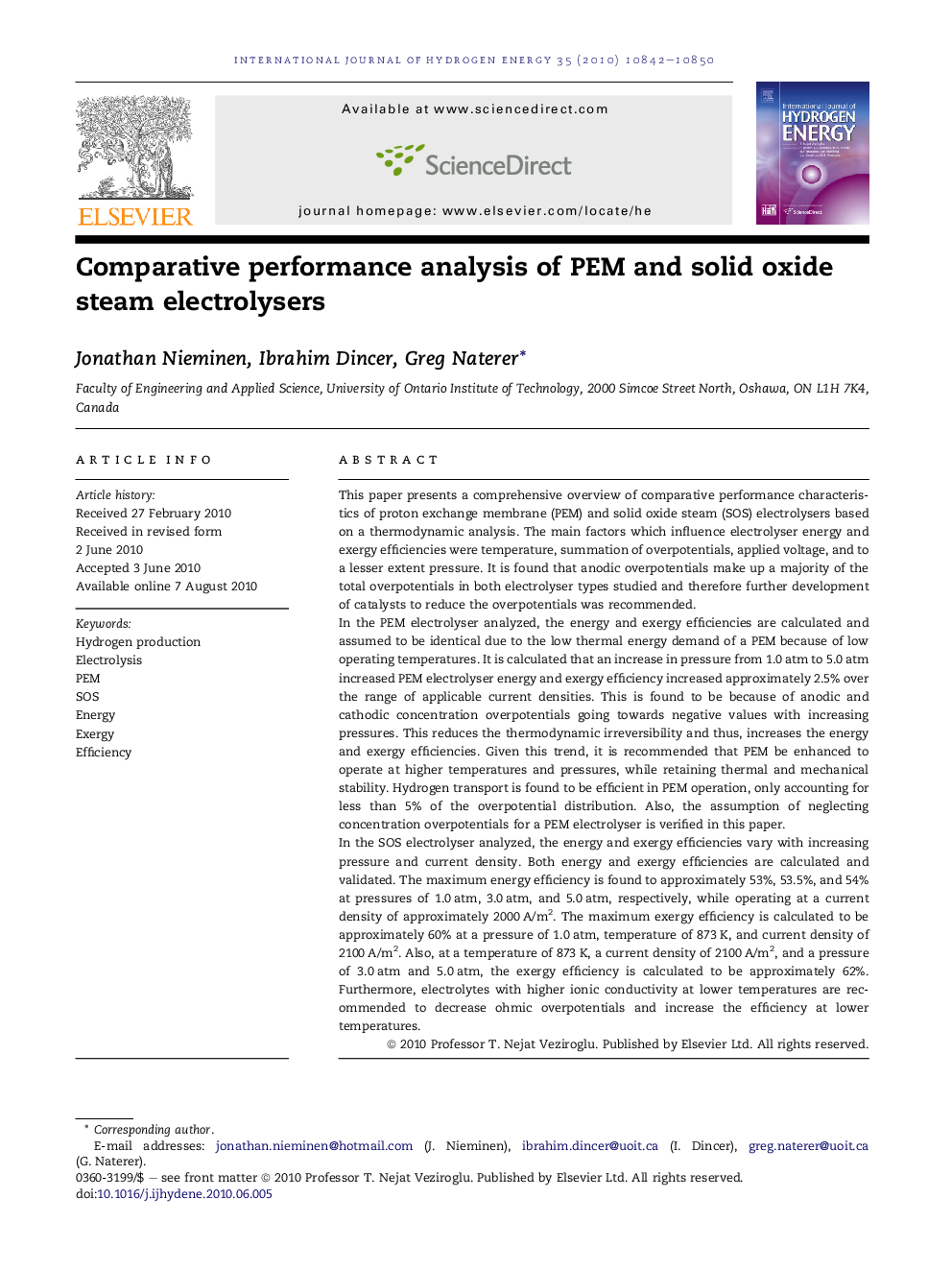| کد مقاله | کد نشریه | سال انتشار | مقاله انگلیسی | نسخه تمام متن |
|---|---|---|---|---|
| 1276679 | 1497597 | 2010 | 9 صفحه PDF | دانلود رایگان |

This paper presents a comprehensive overview of comparative performance characteristics of proton exchange membrane (PEM) and solid oxide steam (SOS) electrolysers based on a thermodynamic analysis. The main factors which influence electrolyser energy and exergy efficiencies were temperature, summation of overpotentials, applied voltage, and to a lesser extent pressure. It is found that anodic overpotentials make up a majority of the total overpotentials in both electrolyser types studied and therefore further development of catalysts to reduce the overpotentials was recommended.In the PEM electrolyser analyzed, the energy and exergy efficiencies are calculated and assumed to be identical due to the low thermal energy demand of a PEM because of low operating temperatures. It is calculated that an increase in pressure from 1.0 atm to 5.0 atm increased PEM electrolyser energy and exergy efficiency increased approximately 2.5% over the range of applicable current densities. This is found to be because of anodic and cathodic concentration overpotentials going towards negative values with increasing pressures. This reduces the thermodynamic irreversibility and thus, increases the energy and exergy efficiencies. Given this trend, it is recommended that PEM be enhanced to operate at higher temperatures and pressures, while retaining thermal and mechanical stability. Hydrogen transport is found to be efficient in PEM operation, only accounting for less than 5% of the overpotential distribution. Also, the assumption of neglecting concentration overpotentials for a PEM electrolyser is verified in this paper.In the SOS electrolyser analyzed, the energy and exergy efficiencies vary with increasing pressure and current density. Both energy and exergy efficiencies are calculated and validated. The maximum energy efficiency is found to approximately 53%, 53.5%, and 54% at pressures of 1.0 atm, 3.0 atm, and 5.0 atm, respectively, while operating at a current density of approximately 2000 A/m2. The maximum exergy efficiency is calculated to be approximately 60% at a pressure of 1.0 atm, temperature of 873 K, and current density of 2100 A/m2. Also, at a temperature of 873 K, a current density of 2100 A/m2, and a pressure of 3.0 atm and 5.0 atm, the exergy efficiency is calculated to be approximately 62%. Furthermore, electrolytes with higher ionic conductivity at lower temperatures are recommended to decrease ohmic overpotentials and increase the efficiency at lower temperatures.
Journal: International Journal of Hydrogen Energy - Volume 35, Issue 20, October 2010, Pages 10842–10850